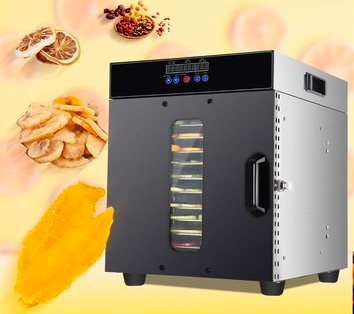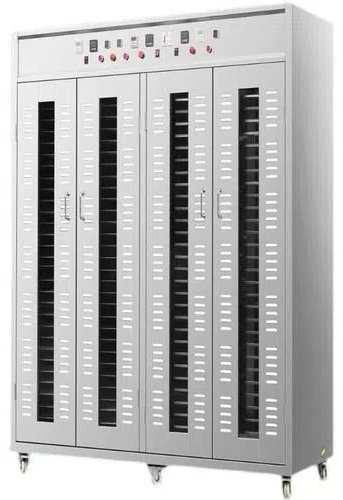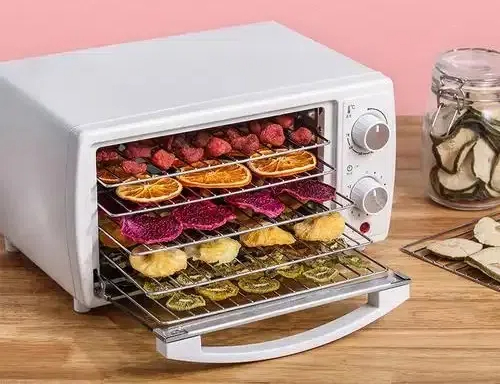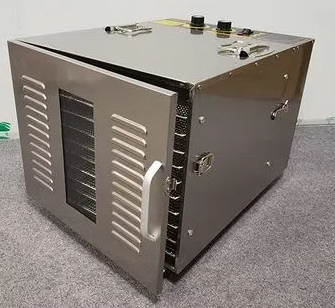
Content Menu
● Introduction
● Understanding Heat Pump Dryers
● Benefits of Using Heat Pump Dryers for Food Processing
● Factors to Consider for Location Installation
>> 1. Space Requirements
>> 2. Ambient Temperature
>> 3. Humidity Levels
>>> Humidity Control Solutions
>> 4. Noise Considerations
>>> Soundproofing Options
>> 5. Ventilation
>> 6. Access to Utilities
● Installation Steps for Your Heat Pump Dryer
>> 1. Prepare the Site
>> 2. Ensure Accessibility
>> 3. Connect Power Supply
>> 4. Plumbing Connections
>> 5. Test Run
● Common Issues During Installation
● Maintenance Tips for Heat Pump Dryers
>> 1. Regular Cleaning
>> 2. Check Seals and Insulation
>> 3. Monitor Performance
>> 4. Professional Servicing
● Expanding on Applications of Heat Pump Dryers
>> Applications in Different Food Industries
>>> A) Fruit Drying
>>> B) Vegetable Drying
>>> C) Herb Drying
>>> D) Meat Drying
● Economic Benefits of Using Heat Pump Dryers
● Future Trends in Heat Pump Dryer Technology
● Conclusion
● Frequently Asked Questions (FAQs)
>> 1. What is a Heat Pump Dryer?
>> 2. How Much Space Do I Need for a Heat Pump Dryer?
>> 3. Can I Install a Heat Pump Dryer Indoors?
>> 4. What Common Maintenance Do Heat Pump Dryers Require?
>> 5. How Do I Know If My Heat Pump Dryer is Working Efficiently?
Introduction
In recent years, heat pump dryers have become increasingly popular in the food processing industry due to their energy efficiency and effectiveness in preserving the quality of dried products. In this article, we will discuss how to choose the right location for your heat pump dryer installation, focusing specifically on the context of food drying machines. Choosing the right location can significantly impact the performance and efficiency of your dryer, ensuring that you get the best results in your production processes.

Understanding Heat Pump Dryers
Heat pump dryers operate by transferring heat from the air and using it to dry food products. Unlike traditional dryers that use direct heat, heat pump dryers recycle the hot air, making them more energy-efficient and environmentally friendly.
Benefits of Using Heat Pump Dryers for Food Processing
- Energy Efficiency: Less energy is consumed compared to conventional drying methods.
- Consistent Drying: Maintains a stable temperature, ensuring uniform drying.
- Quality Preservation: Retains vitamins and nutrients better than other drying methods.
- Reduced Environmental Impact: Lower carbon footprint due to reduced energy consumption.
- Versatility: Suitable for various types of food products, including fruits, vegetables, herbs, and meats.
Factors to Consider for Location Installation
When installing a heat pump dryer, several factors should be considered for optimal performance:
1. Space Requirements
Ensure there is adequate space for the dryer unit. It should allow for proper airflow and maintenance access. A cramped location can lead to overheating and decreased efficiency.
2. Ambient Temperature
Heat pumps operate more efficiently in moderate temperatures. Installing in a location with extreme temperatures may affect performance. Ideally, the environment should be between 10 to 30 degrees Celsius.
3. Humidity Levels
The ideal humidity level is crucial for the drying process. Excessive humidity in the installation area can cause the heat pump to work harder, leading to inefficiencies. Choosing a dry area with controlled humidity levels is essential.
Humidity Control Solutions
Consider using dehumidifiers or air conditioning systems to maintain optimal humidity levels in your installation area.
4. Noise Considerations
Heat pump dryers can produce noise during operation. If the installation site is near living quarters or sensitive areas, consider soundproofing measures or locating the dryer further away.
Soundproofing Options
- Acoustic panels
- Insulated enclosures
- Strategic placement away from noise-sensitive areas
5. Ventilation
Ensure that the area is well-ventilated. This helps in dissipating heat and maintaining optimal operating temperatures for the dryer. Poor ventilation can lead to overheating and reduced efficiency.
6. Access to Utilities
Ensure that your installation site has easy access to necessary utilities such as electricity and water supply for any required plumbing connections.
Installation Steps for Your Heat Pump Dryer
1. Prepare the Site
Clear the installation area of any debris and ensure it is flat and stable.
2. Ensure Accessibility
Make sure the dryer will be easily accessible for maintenance and monitoring purposes.
3. Connect Power Supply
Heat pump dryers require a suitable power supply. Ensure that the electrical connections are done according to the manufacturer's specifications.
4. Plumbing Connections
Some models may require a drainage system for condensation. Make sure to plan for proper plumbing connections.
5. Test Run
After installation, run a test cycle to ensure everything operates correctly. Monitor for any unusual noises or inefficiencies during this process.
Common Issues During Installation
Despite careful planning, some issues may arise during the installation of heat pump dryers:
- Electrical Issues: Ensure all electrical work is carried out by a qualified electrician.
- Poor Airflow: Check that nothing obstructs the vents; this can cause overheating.
- Incorrect Temperature Settings: Make sure to set the dryer to the appropriate temperature for the food you are processing.
- Insufficient Drainage: Ensure that condensation drains properly; pooling water can lead to mold growth and equipment damage.
Maintenance Tips for Heat Pump Dryers
Regular maintenance is essential for ensuring optimal performance of your heat pump dryer:
1. Regular Cleaning
Clean filters regularly to prevent dust buildup which can hinder airflow and efficiency.
2. Check Seals and Insulation
Inspect door seals and insulation regularly to ensure they are intact; damaged seals can lead to energy loss.
3. Monitor Performance
Keep track of drying times and energy consumption; significant changes may indicate maintenance needs.
4. Professional Servicing
Schedule annual professional servicing to check all mechanical components and ensure everything operates efficiently.
Expanding on Applications of Heat Pump Dryers
Heat pump dryers are versatile machines used across various sectors in food processing:
Applications in Different Food Industries
A) Fruit Drying
Heat pump dryers are ideal for drying fruits like apples, bananas, mangoes, etc., preserving their flavor and nutritional value while reducing moisture content effectively without compromising quality.
B) Vegetable Drying
Vegetables such as carrots, peas, and bell peppers benefit from heat pump drying as it maintains color retention while eliminating bacteria through controlled temperature settings.
C) Herb Drying
Herbs like basil, oregano, and thyme require gentle drying methods that retain their essential oils; heat pump dryers provide an excellent solution due to their low-temperature capabilities.
D) Meat Drying
For meat products like jerky or dried fish, precise temperature control ensures safety by eliminating pathogens while maintaining texture and flavor integrity.

Economic Benefits of Using Heat Pump Dryers
Investing in heat pump technology can yield substantial economic benefits over time:
1. Lower Energy Costs: The efficiency of these dryers translates into lower operational costs compared to traditional drying methods.
2. Extended Shelf Life: By preserving quality during drying processes, products have longer shelf lives leading to reduced waste.
3. Market Competitiveness: Companies utilizing advanced technology often gain an edge over competitors who rely on outdated methods due to better product quality.
4. Reduced Labor Costs: Automation features associated with modern heat pump dryers reduce labor requirements during production cycles.
5. Sustainability Marketing: Businesses focusing on sustainability can market their products better by highlighting energy-efficient practices associated with using heat pump dryers.
Future Trends in Heat Pump Dryer Technology
As technology evolves, several trends are emerging in heat pump dryer development:
1. Smart Technology Integration: Future models may incorporate IoT (Internet of Things) capabilities allowing remote monitoring and control via smartphones or computers.
2. Enhanced Energy Recovery Systems: Innovations aimed at improving energy recovery will further enhance efficiency rates.
3. Customization Options: Manufacturers may offer customizable settings tailored specifically for different types of food products enhancing versatility even more.
4. Sustainable Materials: There's an increasing focus on using eco-friendly materials in manufacturing these machines aligning with global sustainability goals.
5. Improved User Interfaces: More intuitive controls will make it easier for operators at all skill levels to manage complex drying processes effectively.
Conclusion
Choosing the right location for installing a heat pump dryer is critical for optimizing its performance and efficiency, particularly in the food processing industry. By considering factors such as space, temperature, humidity, noise, ventilation, and access to utilities, you can ensure that your dryer operates smoothly and effectively. Proper installation will not only enhance productivity but also guarantee the quality of your dried products.

Frequently Asked Questions (FAQs)
1. What is a Heat Pump Dryer?
A heat pump dryer is a type of dryer that uses heat pump technology to transfer heat for drying purposes, making it energy efficient.
2. How Much Space Do I Need for a Heat Pump Dryer?
It varies by model, but generally, you should ensure 1-2 meters of clearance around the unit for airflow and maintenance access.
3. Can I Install a Heat Pump Dryer Indoors?
Yes, but ensure that it is in a well-ventilated area with adequate temperature and humidity control.
4. What Common Maintenance Do Heat Pump Dryers Require?
Regularly clean filters, check drainage systems, and monitor for any unusual noises to maintain efficiency.
5. How Do I Know If My Heat Pump Dryer is Working Efficiently?
Monitor the drying times and energy consumption; increases in either can indicate a need for servicing or check-up.












